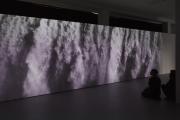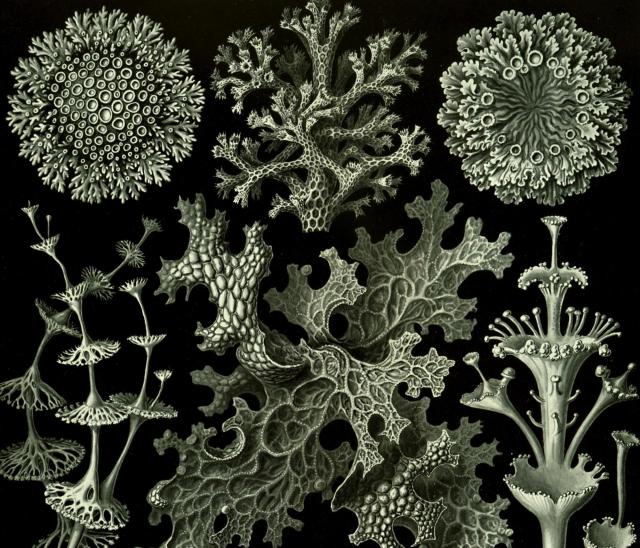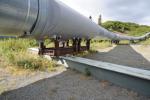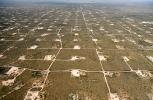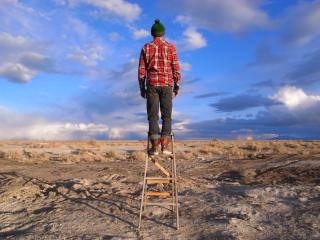MANIFESTOFOS
The FOS Manifesto was created as part of the international project Frontiers of Solitude (2015 – 16) which focused on the relationship between ecology and contemporary art. In the following text we have attempted to briefly summarize at least some of the main themes underpinning FOS.
Before we attempt to think how we can change contemporary art so that it has meaning in our daily lives, it is proper to take a step back and conduct an inventory of our habitual terminology. Only then will we be able to expose the hidden but still active stereotypes, the useless ballast of categories and antiquated constructions. We hold to the conviction that art cannot be reduced to a commodity, aesthetic consumerism, technology, algorithms, a tool for filling vacuums, a luxury, or a personal hobby. We believe something important happens in the active production and appreciation of art, something that forms not only our personality, but also our reality, and that creating art has a therapeutic effect and can enhance our ability to empathize and understand all that is “other.” No matter how tenuous its role may seem from today’s perspective, art, no matter what we may call it, will remain irreplaceable for the individual as well as for society. And foremost, we believe that questions regarding environmental and ecological responsibility pose a direct challenge to contemporary art, thus opening up a space to reformulate its agenda. This constitutes a call to find new content and alliances. The urgency to think within an ecological framework presupposes an "epistemological shift," to step back from perceiving the world as a set of objects, but rather as a perpetual and interconnected flux of events. Art could thus become a catalyst for conjoining personal and social ecologies. If these practical and mental ecologies are to face the ever accelerating tempo of techno-social processes, they need to be constantly updated and kept in a state of permanent revision. This manifesto is outdated and has been from the very first moment it was formulated.
I. How to overcome feelings of helplessness which overtake the individual when faced with the high-speed transformations of the Anthropocene? Can one maintain an objective stance and decouple him/herself from all that is outside, decouple culture from nature? Rename nature ‘the natural environment’ and thus loudly proclaim humanity’s victory in overcoming it? We could then observe nature from both near and far, admire, monitor and categorize it, modify and penetrate it. In our obsessive drive for objectivity, we strive to transform it into an object no longer related to the human, as if it existed only beyond the interface of our systems, computer screens, ever-present sensors, satellites, and beyond our windows. We celebrate our own aloofness and our ability to measure and label the world by means of art and science, which we regard it as superior to nature. This state has befallen us at a time when we find ourselves removed from the communities of other beings, plants and animals. We are inmates in an era of air-conditioned solitude.
It does not matter whether we call nature a super-organism, complex system, matrix, or sentient being, even if we have opted to see culture as the mirror image of nature, or as a constituent part of it. This text aims to point out the certain potential for reconciliation between man and nature, and the part art may play in such an endeavor. Is this idea naive or exaggerated? We believe that it is not: the sociable, ritual and integrative functions of art have for ages held a prominent place in society, and affirm the social essence of art. During the Anthropocene we have gradually discarded this archaic form of art’s signification, and it has pulled back as we have emptied it of meaning.
II. Theories which understand the economy as functioning “outside” the sphere of the natural environment are destructive and deadly. For a technocrat or a geo-engineer, environmental issues are an obstacle to humanity’s drive towards prosperity, and are understood as a roadblock to reason and progress. Neo-liberalism is an economic system where regulation, the state and society are set in opposition to the freedom of the individual, to labor and the free circulation of goods. It is a culmination of the drive to combine previously very disparate tools, territories and communities into one vast experimental laboratory. The global policies of deregulation, standardization, and individuation have come to bear on previously immeasurable space and have radically collapsed it. Today, we have been granted the privilege of being witnesses and actors at a time of ecological catharsis.
III. Only in recent decades has our understanding of natural processes allowed man to at least partly understand the unimaginable complexity and interrelatedness of that system, of which humanity constitutes just one of its myriad folds. It is unfortunate that we have achieved such an understanding precisely at a time when our culture and our way of life have put in jeopardy the whole biosphere. We use the word ‘culture’ in a broad sense, one that transcends its simply human dimension. It is more than “non-genetically transmitted patterns of behaviour, common to the human species,” but encapsulates all symbiotic, eusocial schemes of coexistence.
IV. Our “common home” is furnished with both “natural” and “anthropogenic” structures. The geological and the human can no longer be easily distinguished, for this encompasses the silicon infrastructures of smart cities and invasive biological species, the relicts of medieval towns and villages, freeways and toxic river water, the receding biotopes of rain forests, psychotropic substance laboratories, the azure surfaces of acidic lakes and derivatives of lithium production, spores, computer chips and drones, underground nuclear waste storage, peat-bogs, coal beds and oil pipelines, herbicides, bacteria and biphenyls, polymers and teratogenic substances, coral reefs and satellites, fracking and pharmaceuticals, fish farms and nutritional agrology, genetically modified agriculture and global waste disposal management, weather and meteorology, cybernetics and space elevators.
V. If we maintain the tempo and mode of operation of the production-consumption cycle, a paradigm we have become accustomed to in our part of the globe, the idea of a “common home” will become untenable. We are carving up our planet into zones of production and consumption, factories, warehouses and waste dumps, peace and war, life and death. Our change of practice, including that of art production, is predicated on the acceptance of the need for rationally and emotionally grasping the interrelatedness of the human with the environment, the acceptance of the ramifications of our activity and the causal chain reaction that a single gesture may precipitate in the whole.
Sentimentality and solidarity with other beings is not a mark of weakness. Rather, it is a step towards survival. Darwin’s theory of natural selection and interspecies competition is useless as a framework in the contemporary situation. A more useful tool is social biologist’s Edward O. Wilson’s concept of “consilience.” It is one of many attempts to join the language of natural sciences and the humanities, and stands as an affirmation of the importance of friendship, symbiosis and coexistence, both in nature and in the human community.
VI. The transition from capitalism to post-capitalism is accompanied by deep ecological changes, and constitutes a call for intensive adaptation. Ecological conflicts tend to be interpreted as more abstract, more “distanced” than conflicts of an economic, racial, class, religious or social nature. Ecological violence, however, grows from the very same economic and ideological substrate. It is predicated upon the same preconditions from which grow those systems which transform reality into an object and make it an inventory of commodities. If we approach the world as a soulless thing, then people will also become things. If we resign on the gift of thinking and on our subjectivity we will be transformed into an object through the powers of that immense entity which surrounds us and determines us.
VII. The effects of industrialization on the natural environment are often denied or labeled as a necessary tax – a tithe paid in the name of “progress”. The idea of permanent growth indexes ever broader frontiers and constantly postpones its final limit for an ever more distant future. Without proposals for solutions, and without political, economic, technological and social change that must occur at a systemic level, we cannot reach any form of satisfactory resolution for the environmental crisis, nor can we mitigate the ongoing and future catastrophes related to it.
“The true artist is the grindstone of the senses; he sharpens eyes, mind and feeling; he interprets ideas and concepts through his own media. In the midst of widespread social controversies he cannot escape that task. He has to take sides and make his stand; indeed the artist has a formative ideological function. Otherwise his work would be only an exercise of skill in composition.” Lázsló Moholy-Nagy, Vision in Motion, 1949
"I am afraid of the consequences of a science which is built on concepts like symmetry, invariance, uniqueness, time and beauty. I would love it if the purpose of science was to create surprise, nonsense, humour, pleasure, and play."
Billy Kluver, Kaprow and Kluver, 1962
VIII. Art, when preoccupied with ecological or environmental issues, inhabits a space between social activism, civic passivity, sentimental naivety and aesthetic escapism. It often remains content with reductionism and the obfuscation of root causes. The new art will search for inspiration in System Art, in both natural science and the humanities, in social and political movements of the past. It will straddle the space between specializations, the human and the inhuman, the ethical and the aesthetic, between practical and abstract thinking, empathy and intuition. Such art can emerge anywhere, especially on the peripheries of automated production, business, industry and marketing -- a system on which the artist is existentially, socially and psychologically dependant. Larger autonomy will bring more self-confidence and breed potentialities. The artist will not be solely preoccupied with the aesthetics, craft, strategy and method of production of an isolated artifact. The fluid oscillation between the use and the critique of technology and its opposite, between the calibration of the tool and mindfulness, and between mobility and occupying the space we inhabit will be of the utmost importance.
IX. The transformation of art will not be achieved while seated in well-tempered rooms, galleries and museums, hidden away in the couloirs of academies and universities. Transformation will take place in unprotected zones, during conflicts and unrest, where new stories will be told whose contours we will feel through their impact. Art will take into account all that has been fractured and left unaddressed by abstract forms of language, suppressed as unimportant, heretical, dangerous, doubtful, preposterous; all that which the mediated functionaries of progress have displaced beyond the frontiers of our perception.
X. Such a form of art production is not a construct of sociologists, philosophers, aesthetes or politologists working in the fields of Accelerationism, Object Oriented Ontology, Speculative Realism, hyperobjects, post-capitalism, the Anthropocene or the Capitalocene. It is imperative to once again embrace social reality.
What is necessary then for bringing about transformation: adventurism, pathos, sentiment, (self) irony, sharpened senses, reading the terrain without GPS or smartphones, collecting samples and placing details in new contexts; all that is inscribed in the landspace and not necessarily pleasant or aesthetic. Also, the redefining of the artist as a stalker. A true stalker is so close to the ground that, much like the hunter, he becomes part of the terrain: he becomes one with the footprints and with the beings who have left their mark in the dirt, the grass, the asphalt. To give up on flippant exclusivity means to experience and personally live through every fracture and scar, and examine the substrate and the capillaries of a wounded land. In this sense the landscape itself becomes art – a breathing and vibrating musical score. Let us hope that the composition leaves us with an open ending.
Translated by Vít Bohal
Thanks to the Frontiers of Solitude team, numerous friends and colleagues for their encouragement, for reading various versions of this text, their critical notes, especially Dagmar Šubrtová, Michal Kindernay, Jiří Zemánek, Ondřej Vavrečka, Matěj Strnad, Pavel Borecký, Lloyd Dunn. Inspiration for the Manifest drew from many different sources such as: Josef Šmajs: The Lease Contract with the Earth, A Manifesto for 21. Century by Helen Mayer and Newton Harrison, and texts by T. J. Demos, Jason W. Moore, Murray Bookchin, Lucy F. Lippard, Natalie Jeremijenko and many others.
Epiphany – Frontiers of Solitude
Dům umění Ústí nad Labem September – October 2016 http://duul.ujep.cz/ An exhibition and symposium created within the framework of the international transdisciplinary project Frontiers of Solitude. .. there are many, many other worlds, yes, but they are all hidden within this one. And so to neglect this humble, imperfect, and infinitely mysterious world is to recklessly endanger all the others. Earth in Eclipse-an Essay on the Philosophy of Science and Ethics David Abram …
Art in the Anthropocene: Encounters Among Aesthetics, Politics, Environments and Epistemologies
Edited by Heather Davis and Etienne Turpin …
